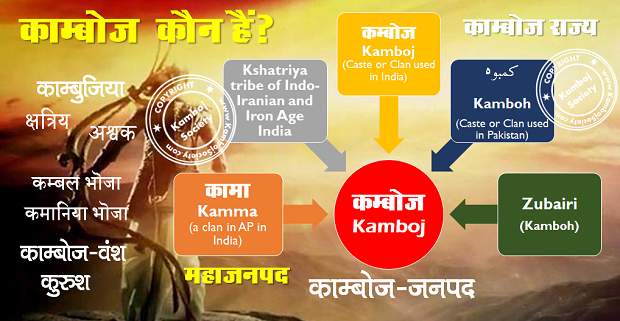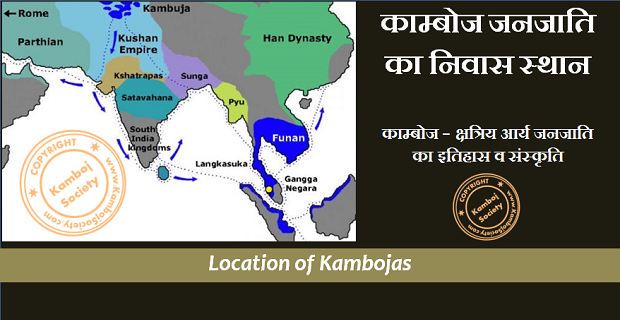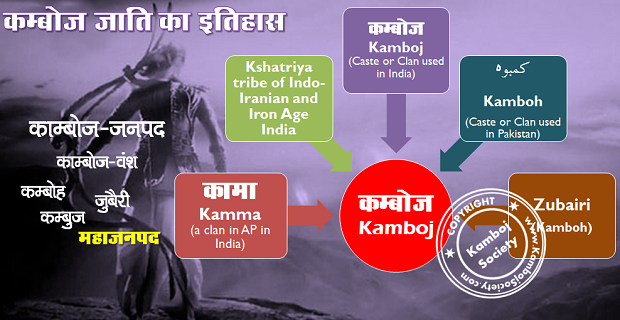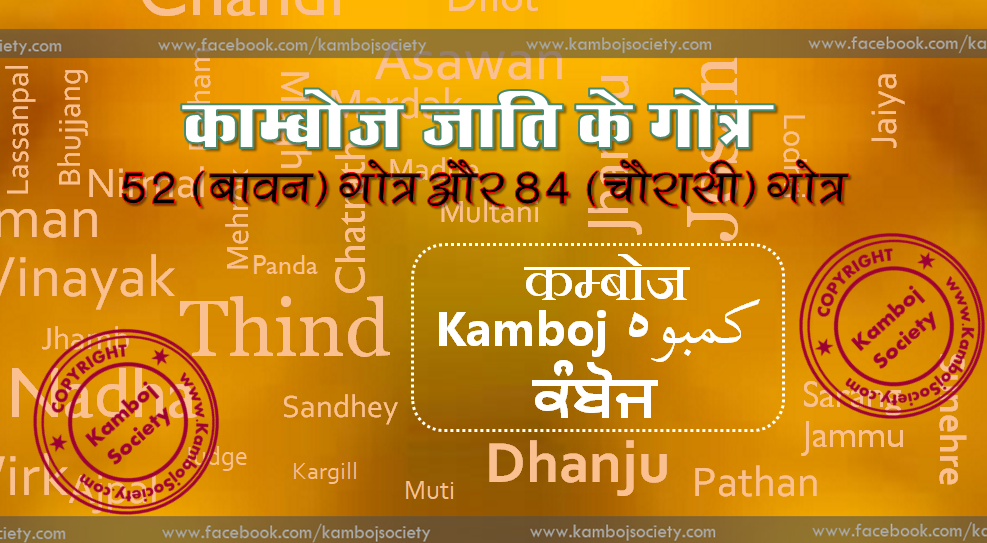Komedes is the Classical antiquity|classical name applied to the people, who, as the scholars believe, had followed Scythian culture. They were located around Mt Kumuda as well as within/and beyond the Mt Hemodos and were a widely spread tribe. They were called Komedes since they were connected with Kumuda-Divipa and Kumuda Mountain of the Indian texts. Scholars call a section of this people as Homodotes which classical name they earned on account of their geographical connection within Mt Hemodos or Emode. This people had occupied the land of Soma/Hauma and accordingly practiced drinking/producing of Soma, hence, they seem to have been a ramification of the 'Saca Haumavargas' (Soma twisting Sakas), but in reality, they were distinct from Saca Haumavargas.
Amyurgian Scythians
According to Herodotus, the Sakai (i.e the Sakas) were, in truth, the Amurgio Skuthai i.e the Amyurgian Scythians History, VII, 64.. Herodotus’s Amyurgians or Amyrgians are the Saka Haumavarga of the Persian language|Persian inscriptions. Amyrgians apparently got their name from their association with Haoma (Sanskrit Soma). 'Haumavarga Sakas' literally means Soma pressing Sakas Autochthonous Aryans? The Evidence from Old Indian and Iranian Texts, Section 1, Terminology, Dr Michael Witzel.. The ancient Indo-Iranians made use of Soma (Iranian languages|Iranian Haoma). The leaves of the plant were pressed/squeezed and the juice so produced was mixed with milk or water and consumed. The place famous for Soma/Haoma plant was Mujavata or Munjavata parvata. According to Atharvaveda, it lied close to Bahlikas|Bahlika and Gandhara Atharvaveda 5.22.14. in the north-west (Central Asia). Mahabharata (14.8.1) also locates Mujavat in the snow-laden mountains (Himavata) of north-west
The Bahlikas are undoubtedly the Bactria|Bactrians. Scholars have determined that the Mujavat (the land of Soma) refers to Hindukush-Pamirs See: Ancient Kamboja, People & the Country, 1981, p 222, Dr J. L. Kamboj; Also see: "The Mujavat mountain is known since Rig Veda times and is a semi-mythical mountain in Hindukush- Pamir area and said to have a good variety of Soma. To the Vedic Indians, it clearly is situated 'at the end of the world'. In the same (north)-westernly direction, the Bahlika people are found; they are supposed to mean Bactrians...." (See: Early Eastern Iran and the Atharvaveda, Persica-9, 1980, p 87, Dr Michael Witzel); cf also: “In addition, Soma, a plant of the high Iran|Iranian Pamir and Himalayan mountains -- especially that of mujavat; cf. Avestan muzha --originally had a Central Asian name as well (aMzu). Indo-Iranian *sau-ma, with regular development (au > o) to Ved. so-ma and (s > h) to Avestan haoma, Old Persian hauma, is a simple and rather descriptive derivative of su "to press." (Dr Michael Witzel) [https://nautilus.shore.net/~india/ejvs/ejvs0702/ejvs0702c.txt].
According to Perspolis and Hamadan inscriptions of Achaemenid Darius I, there were at least three major settlements of the Sakas viz. Saka Haumavarga, Saka Tigrakhauda and Saka Taradarya Select Inscriptions bearing on the Indian History and Civilization, Vol I, p 10; Ancient Kamboja, People and the Country, 1981, p 297, Dr J. L. Kamboj. In the days of Achaemenid Darius I (522 BCE - 486 BCE), the Sakas Haumavarga lived 'beyond Sogdiana' (para-Sugudam) which when seen from Perspolis (the seat of power of king Darius, the royal author of these inscriptions), seems to point to Tashkant, Fargana, Alai Mountains, Tian Shan, Kashgar and the regions about Based on the wording of Persian Inscriptions, some writers locate this Saka settlement to the north of Suguda (Sogdiana) in the plains of Jaxartes in the Issyk-kul Lake area, but Para-Sugudma should rather point to Fargana, Kashgar, Pamirs and the about regions. This location of Haumavarga Scythians seems more reasonable since there was another different settlement of the Sakas, north of Jaxartes in its lower valleys near Aral, which settlement must be distinguished from the Saka Haumavarga. In reference to Sakas of Transoxiana i.e Saka Haumavarga, Arrian also remarks: “…the Sakas living not far from Bactria and Sugada” (See: History and Culture of Indian People, Vol II, p 120). This obviously alludes to the Sakas living in the regions of Tashkant, Fargana and Kashgar etc i.e Haumavarga Sakas.. But according to Mahabharata, the Transoxiana|Transoxian Pamirs and regions north of it as far as Fargana are known to have been the habitat of the allied tribes of the Lohas, the Parama Kambojas, the Rishikas etc Lohan paramakambojanrishikan uttaranpi...Mahabharata 2.27.25. See Ganguli's Trans: [https://www.sacred-texts.com/hin/m02/m02026.htm]. See: Geographical Data in Early Puranas, pp 167-68, Dr M. R. Singh; Problems of Ancient India, 2000, p 1-8, K. D. Sethna; cf: A Geographical Text of Puranas: A Further Critical Study, Purana Vol VI, No 1, Feb 1962, pp 112- sqq.; Purana, Vol VI, No 1, pp 207-14 etc. Thus, broadly speaking, the Persian term Haumavarga applied probably to the Saka proper as well as the Lohas and Parama Kambojas and Rishikas tribes settled north of Oxus etc. In all probability, this settlement of the Haumavarga Sakas finds numerous references as Shakas in ancient Indian texts and are known to have been closely associated with the Kambojas (or Parama Kambojas) etc. This was same the people who had formed the constituent of the Kamboja army of Sudakshina|Kamboja Sudakshina in Kurukshetra War and the Kambojas|Mahabharata war. And undoubtedly, this was people who had become the target of the tribal aggression of the Yuezhi|Ta Yue-chi or Great Yue-chi Ancient Kamboja, People and the Country, 1981, p 297, Dr J. L. Kamboj; cf also: Political History of Ancient India, 1996, pp 381, 691-92, Dr H. C. Raychaudhury and Dr B. N. Murkerjee.
The author of Vayu Purana uses the name Kumuda-dvipa for Kusha-dvipa Vayu I.48.34-36. Kumuda is also a Puranic name of a mountain forming the northern buttress of Mt Meru also known as Sumeru (Pamirs) Srimad Bhagavatam, Canto 5 , Chapter Seventeen: The Descent of the River Ganges; canto 5, chapter 16, verse 11. . It extended between headwaters of Oxus and Jaxartes. In anterior Epic Age, Kumuda was also the name given to high table-land of the Tartary located to north of the Himavata from which the Aryan race may have originally pushed their way southwards into the Peninsular India|Indian peninsula and preserved the name in their traditions as a relic of old mountain worship (Thompson). Thus, the Kumuda-dvipa lay close to the Pamirs and, in fact, name Kumuda-dvipa applied to southern territory of Shakadvipa or Scythia. It lied north to Hemavata (Hindukush) and probably comprised Badakshan, Alay|Alai valley/Alai Mountains range, Tien shan, Kerategin and probably extended northwards as far as Zeravshan valley and Fargana.
Ancient geographer Ptolemy calls the region fed by Jaxartes and its tributary|tributaries as Komdei J. W. McCrindle, Ancient India, Trans & Edited by Dr R. C. Majumdar, 1927, p 275.. Ptolemy refers to the people of Komdei as Komedes Geography 6.12.2; 6.13.3. Ptolemy also refers to one tribal people whom he variously calls Komoi (=Kamoi) or Komroi/Khomroi or Komedei and locates them in the mountainous regions of Sogdiana as far as Jaxartes J. W. McCrindle, Ancient India, Trans & Edited by Dr R. C. Majumdar, 1927, pp 268, 284. In fact, as per Ptolemy’s evidence, the Komedes (people) inhabited the entire land of the Sakas Ptolemy’s Geography 6.13.3. Julius Honorius’ Cosmography too mentions the Komedes people as Traumeda (from Caumedes) and also mentions Mt Caumedes as the source of river Oxus. Per evidence of Ptolemy and of Julius Honorious, Mt Caumedes or Komedes extended from the head-waters of Oxus to Jaxartes Geography 6.12.3; and Cosmography A.7. Ammianus Marcellinus too calls the Sogdian mountainous regions as Komadas J. W. McCrindle, Ancient India, Trans & Edited by Dr R. C. Majumdar, 1927, p 326
According to scholars, Ptolemy|Ptolemian reference to Komdei or Komedes as region probably alludes to Komdesh or Kamdesh (?) (from Kambodesh (?), probably "Kambojdesh") Central ASiatic Provinces of the Mauryan Empire, p 403, Dr H. C. Seth; Ancient Kamboja, People and the Country, 1981, pp 49, 155, Dr J. L. Kamboj.. It is the Kiumito or Kumito of Hiun Tsang and Kumed or Kumadh of the Muslim writers, Kiumiche of Wu'k ong, Kumi of T'ang and Cambothi, Kambuson and Komedon of some other Greek writings. Al-Maqidisi, in his book Al-Muqhni, calls the people of this territory as Kumiji which seems equivalent to Sanskrit Kamboji or Kamboja Predatory peoples ---the Kumiji tribemen of the Buttamn Mountains in the upper Oxus near Khuttal. Numerous scholars have connected Komedes/Komedei of classical writings with the Kambojas of Iranian affinities India and Central Asia, 1955, p 25, Dr P. C. Bagchi; Central Asiatic Provinces of Mauryan Empire, p 403, Dr H. C. Seth; Ancient Kamboja, People and the Country, 1981, pp 48-49, 155, 300, Dr J. L. Kamboj; Studies in Indian History and Civilization, Agra, p 351; India and the World, 1961, p 71, Dr Buddha Prakash; Kambojas Through the Ages, 2005, pp 91, 92, 159, S Kirpal Singh, These Kamboj People, 1979, p 355, K. S. Dardi etc etc..
The classical sources further indicate that the south-western section of the Komedes (people) living within Mt Hemodos were known as Homodotes. Thus, Homodotes were a section of the Komedes living within Mt Hemodos or Emode, a part of Hindukush or Pamirs.
As the name itself indicates, the Komedes people occupied Kumuda-dvipa or Kumuda region of Indian traditions. The various classical sources indicate that Komedes, Traumeda/Caumedae, Homodotes/Homodoti/Homodontes, Komoi, Komroi/Khomroi are the variant names of the same people inhabiting this region. The Komoi of Ptolemy apparently refers to Kamboi-- a vulgo variant of Kamboja/Kambojika, Kamboika, Kamboy or Kambo Ashoka's Rock Edicts V and XII at Shahbazgarhi and the Jaina Canon Uttradhyana-Sutra (11/16), both write Kamboya for Kamboja. Other classical sources call the Komedes people also as Asii/Asii|Asio “In Aswa, we have ancient race peopled on both sides of Indus and probable etymon of Asia. The Assaceni, the Ari-aspii, the Aspasians and (the Asii) whom Strabo describes as Scythic race, have same origin. Hence Asi-gurh (Hasi/Hansi) and Asii-gard, the first settlements of Scythic Asii in Scandinavia" . (See: Annals and Antiquities of Rajasthan, Reprint (2002), Vol I, p 64. Also see: pp 51-54, 87, 95; Vol-2, P 2, James Tod). while the Chinese equivalent was Xiuxun/Sai etc etc. On the north of Kumuda-dvipa was the mainland of the Sacarauloi/Saraucae (Sacaraucae) and probably of the Pasiano in Fargana, Tashkant and Issyk-kul etc. The Indian text Mahabharata indicates that the southern parts of Shaka-dvipa was the habitat of the Lohas, Parama Kambojas and Rishikas etc Mahabharata 2.27.25; India as Known to Panini, p 70, Dr V. S. Aggarwala; The Kambojas Through the Ages, 2005, S. Kirpal Singh.
.
Thus Parama Kambojas of Mahabharata apparently occupied what has been referred to as the Kumuda or Kumuda-dvipa in the Indian texts and Komedei/Komedes/Caumedes in classical writings See: The Kambojas Through the Ages, 2005, pp 59, 92, 159, S Kipral Singh Dr V. S. Aggarwala writing on Rishikas observes: “The name Rishika occurs in Mahabharata as a part of 'Shakadvipa'. Arjuna had conquered Rishikas across the Vakshu (Oxus) which flowed through the Shaka country”. Since the Parama Kambojas, Lohas and the Rishikas were all neighborly tribes and were allied together in their fight against Arjuna ( Lohan. ParamaKambojan.Rishikanuttaranpi), this verifies that the Transoxiana|Transoxian Lohas and Parama Kambojas were also located in Shakadvipa or Scythia .
Nirukata (II.2) of Yasaka Believed by some belonging to 7th c BCE, by others to 3rd c BCE. attests that verb shavati in the sense "to go" was used only and only by the KambojasEarly Eastern Iran and Atharvaveda, 1980, 92, Dr Michael Witzel; also Nilukata, Vol I, Sarup.
The above linguistic evidence indicates that ancient Kamboja probably included the Pamirs, Badakshan, and parts of Tajikstan extending as far as Yognobi region in the doab of the Oxus. On the east it was bounded roughly by Yarkand and/or Kashgar, on the west by Bahlika (Uttaramadra), on the northwest by Sogdiana, on the north by Uttarakuru, on the southeast by Daradas|Darada, and on the south by Gandhara op cit, pp 155, 237, Dr J. L. Kamboj. Further, Prof Tomaschek has stated that of all the dialects of Galcha, the Munjani is most closely related to the language of Zend Avestan of the ancient Iranians Centralasiatische Studien II. Die Pamir-Dialekte, Vienna, 1880, Wilhelm Tomaschek; quoted by Dr J. C. Vidyalankar in his Bhartya Itihas ki Mimansa, p 471, 480-81, Dr J. C. Vidyalankar; Quoted in: Ancient Kamboja, People and the Country, 1981, p 217, Dr J. L. Kamboj Scholars connect name Munjan/Munjani to ancient 'Mujavat' (people/region) Early Eastern Iran and the Atharvaveda, Persica, 9, 1981, p 105, fn16, Dr Michael Witzel; which name has been referred to in Atharvaveda and Mahabharata. Term shiya in Munjani/Munji dialect of Galcha, used in the sense
The foregoing discussion indicates that the ancestors of Munjani people were speakers of Kamboja language and belonged to the Parama Kamboja domain. This also shows that the Komedes of the classical writings translates into Parama Kamboja of the Mahabharata tradition.
As seen from the foregoing discussion, the clans of the Parama Kambojas (Asii), Lohas and Rishikas (Tukharas?) also fell into the Scythian region often said to belong to Amyurgian Scythians by Herodotus. Majavat, the land of Soma, apparently fell within the domain of Parama Kambojas in Pamirs (Munjan or Muztagh Atta?). Like other Scythian clans, the Parama Kambojas also may have practiced Soma cult and thus they fell within the Persian/Herodotean definition and scope of Haumvargas/Amyurgios. Otherwise, they were a distinct tribe from the Sakas but were undoubtedly Scythian if one follows the classical definition of Megasthenes, Diodorus, Ptolemy, Pliny and Strabo etc. No doubt, that the Linguistics|linguistic traces of ancient Kamboja language have been seen in several modern languages of the Pamirs, Khotan and Sogdiana. The Parama Kambojas were obviously living within Scythia of the classical writers or the Shakadvipa of the Indian texts. Their land was also alternatively known as Kumuda-dvipa. And they were known by other names like Asii (from Aswa), Homodites (from Mt Hemodos, Emode, Oimode/Oemeda) of classical and, Xiuxun, Wai- etc of the China|Chinese writings. They have been lumped together with other tribes of south-east Scythia and all called by the general name Sacae by Greeks and Sakas by the Iran|Iranic sources. They were known as Shakas in Indian texts Dr Robert Shafer has recently reported that the Shakas, Kambojas, Pahlavas, Sugudas etc was the left- over population of the Indo-Iranian Aryans after the latter had moved from their original home in Central Asia to Iran and India (See Report: Ethnography of Ancient India, p 43, Robert Shafer) .
During second quarter of second c BCE, the Homodotes/Komedes or Asii (Parama Kambojas) appear to have participated in the tribal migration to Bactria and Sogdiana|Sugugda and then further to Helmond valley. The later distribution of Komedes who are mentioned in the itinerary of Maes Titianus (1st century CE) used by Ptolemy in his treatise on Geography attest this fact. Ptolemy gives a relatively full account of this people: the Komedes inhabited the entire mountainous land of the Sakas, whereas formerly, they are known to have been confined to only Pamirs, its northern valleys and Badakshan.
Scholars believe that the land of Parama Kamboja of Indian texts was taken over during second c by the Tukharas Bhartya Itihaas ki Ruprekha, p 534, Dr J. C. Vidyalankar; Ancient Kamboja, People and the Country, 1981, pp 129, 300 Dr J. L. Kamboj., and as a result, some sections of their population had dispersed to other places while other population stayed put there and became subjects of the Tukharas. The former Parama Kamboja thus became Tukharistan.
According to Strabo, Greeks|Greek Bactria|Bactriana was taken over by nomads like Asii/Asii|Asio, Pasianoi, Tokhario and Sakarauloi who had originally come from country from other side of Jaxartes. In fact, there seems to be a factual error in Strabo's statement since only Sacaraulois i.e the proper Amyurgian Sakas appear to have come from the Jaxartes and the northern Fargana regions. The Asii or Asio (Parama Kambojas) belonged to the Pamirs/Alai valley and southern parts of Fargana. Similarly, the Pasianois also belonged to Fargana or about region. They had joined the displaced Sacaraulois in their south-westerely movements or else they were also displaced by the invading hordes of the Ta Yue-chis.
Some scholars tend to link the Rishikas of Mahabharata with the Tukharas and the latter with the Kushanas and the Ta Yue-chis themselves. If one accepts this connection, then the Tukharas or Tusharas ( => Rishikas => Kushanas = > Yue-chis) had controlled the eastern parts of Bactria country (Ta-hia) while the combined forces of the displaced Sakarauloi, 'Asii/Asio' (horse people = Parama Kambojas) and the 'Pasinoi' of Strabo etc had occupied its western parts after being dislocated from their original homes in Issyk-kul, Fargana, the Alay|Alai valley and Tien shan by the Ta-Yuechis. The Ta-hia of the China|Chinese records is taken to mean Tukhara/Tokhara which also is believed to have included Badakshan, Chitral, Kafirstan and Wakhan which districts had formed eastern parts of Bactria See ref: Political History of Ancient India, 1996, Commentary, p 719, Dr B. N. Mukerjee. It is also notable that before its occupation by the Tukhara Yue-chis, Badakshan and Alai valley had formed a part of ancient Kamboja i.e. it was a part of Parama Kamboja country. But after its occupation by the Tukharas during second century BCE, it became a part of Tukharistan. Around 4th - 5th century AD, when the fortunes of the Tukharas finally died down, the original population of Kambojas re-asserted themselves and the region again started to be called by its former name i.e. Kamboja (See: Bhartya Itihaas ki Ruprekha, p 534, Dr J. C. Vidyalankar; Ancient Kamboja, People and the Country, 1981, pp 129, 300 Dr J. L. Kamboj; Kambojas Through the Ages, 2005, p 159, S Kirpal Singh). There are several later-time references to these Kambojas of Pamirs/Badakshan. Raghuvamsha, a 5th c Sanskrit play of Kalidasa, attests the Kambojas on river Vamkshu (Oxus) as a neighbors to the Hunas (Raghu: 4.68-70). They have also been attested as Kiumito by 7th c China|Chinese pilgrim Hiun Tsang. Eighth century king of Kashmir, king Lalitadiya had invaded the Oxus|Oxian Kambojas as is attested by Rajatarangini of Kalhana (See: Rajatarangini 4.163-65). Here, they are mentioned as living in the eastern parts of the Oxus valley as neighbors to the Tukharas who were living in western parts of Oxus valley (See: The Land of the Kambojas, Purana, Vol V, No, July 1962, p 250, Dr D. C. Sircar). Arabic geographer Al-Idrisi (1099-1166 CE), while writing on Badakshan, its flora (plants)|flora, its fauna (animals)|fauna, its scenic beauty, its quality horses & ponis, its precious stones and mineral wealth etc---at the end, he states that Badakshan shared boundaries with Kanoj. The Kanoj of Idrisi, in fact, is the Sanskrit Kamboj. Due to misplacement of dot, the Kamboj got changed to Kanoj in Persian language|Persian transcription. Al-Idrisi belonged to 11th c AD. Obviously, the boundaries of ancient Kamboj had considerably shrunken down at times of Idrisi so that he had to differentiate Badakshan from the Kamboj located in its contiguity i.e. Pamirs (Views of Dr J. C. Vidyalankara, Dr J. L. Kamboj). Otherwise also, the Kanoj of Idrisi can't be the Kanauj of Uttar-Pradesh since Kanauj of Uttar-Pradesh does not share boundaries with Badakshan and it is also located over thousand miles away from Badakshan.. The Kambojas of Trans-Hindukush territories (i.e Parama Kambojas) again come into limelight and find important references in 5th century Sanskrit play Raghuvamsha|Raghuvamsa of Kalidasa; in the itineraries of 7th century China|Chinese pilgrim Hiun Tsang; in the victories of eighth century king Lalitadutya Muktapida of Kashmir; as well as in the writings of Arabic geographer Al-Idrisi (1099-1166 CE) etc etc. These Kambojas apparently were the descendants of that section of the Kambojas who, instead of leaving their ancestral land during second c BCE under pressure from Ta Yue-chi, had rather compromised with the invaders and had decided to stay put in their ancestral land instead of moving to Helmond valley or to the Kabol valley. There is yet another evidence which equates the Kamboja = Tokhara. A Buddhist Sanskrit Vinaya text (Gilgit Manuscripts, III, 3, 136, Dr N. Dutt, quoted in B.S.O.A.S XIII, 404) has the expression Satam Kambojikanam kanayanam i.e a hunderd maidens from Kamboja. This has been rendered in Tibetan language|Tibetan as Tho-gar yul-gyi bu-mo brgya and in Mongolian language|Mongolian as To-gar ulus-un yagunKomedes, Komoi/Komroi and Kumiji People
Kumuda or Kumud-dvipa of Ancient Indian Traditions
Kumuda is Komedei/Komedes of Ptolemy and others
The Komedes/Komoi or Kumiji were Parama Kambojas
Linguistic evidence
(Nirukata II.2.8)
Trans:
The verb 'shavati', meaning 'to go', is used by the Kambojas and only the Kambojas..... but its root 'shava' is used by the Aryans i.e Indo-Aryans. . It has been proven that the modern Ghalchah languages, Valkhi, Shigali, Sarikoli language|Sarikoli, Jebaka (also called Sanglichi or Ishkashimi language|Ishkashimi), Munjani/Munji language|Munji, Yidgha language|Yidgha, and Yaghnobi language|Yaghnobi etc, mainly spoken in Pamir languages|Pamirs and countries on the head-waters of Oxus, still use terms derived from ancient Kamboja shavati in the sense "to go" Linguistic Survey of India, Vol X, pp 456ff, 468, 473, 474, 476, 500, 511, 524 etc; Journal of Royal Asiatic Society of Asia, 1911, pp 801-802, Sir Griersen; India as Known to Panini, 1968, p 49, Dr V. S. Aggarwala; Geographical Data in the Early Puranas, A Critical Study, 1972, p 164, Dr M. R. Singh; Bharata Bhumi aur uske Nivasi, Samvat 1987, pp 297-305, Dr J. C. Vidyalankar; Geographical and Economical Studies in the Mahabharata, Upayana Parva, p 37, Dr Motichandra; Ancient Kamboja, People and the Country, 1981, pp 127-28, 167, 218, Dr J. L. Kamboj; Sindhant Kaumudi Arthaprakashaka, 1966, pp 20-22, Acharya R. R. Pande.. The Yagnobi dialect spoken in Yagnobe valley around the headwaters of Zeravshan in Sogdiana, also still contains a relic from ancient Kamboja shavati in the sense "to go" See: Bhartya Itihaas ki ruprekha, 229-301, Dr J. C. Vidyalankar; Linguistic Survey of India, Vol X, p 456ff, Journal of Royal Asiatic Society of Asia, 1911, pp 801-802, Sir Griersen; also Ancient Kamboja, People And the Country, 128, Dr J. L. Kamboj. Further, the former language of Badakshan was also a dialect of Galcha which has been replaced by Persian language|Persian only in the last few centuries Linguistic Survey of India, X, p. 456; Ancient Kamboja, People and the Country, 1981, p 128, Dr J. L. Kamboj; Bhartya Itihaas ki ruprekha, p 531-33, Dr J. C. Vidyalankar etc..
Parama Kambojas vs Haumavarga Scythians
Migration of Komedes/Asii (i.e. Parama Kambojas)



